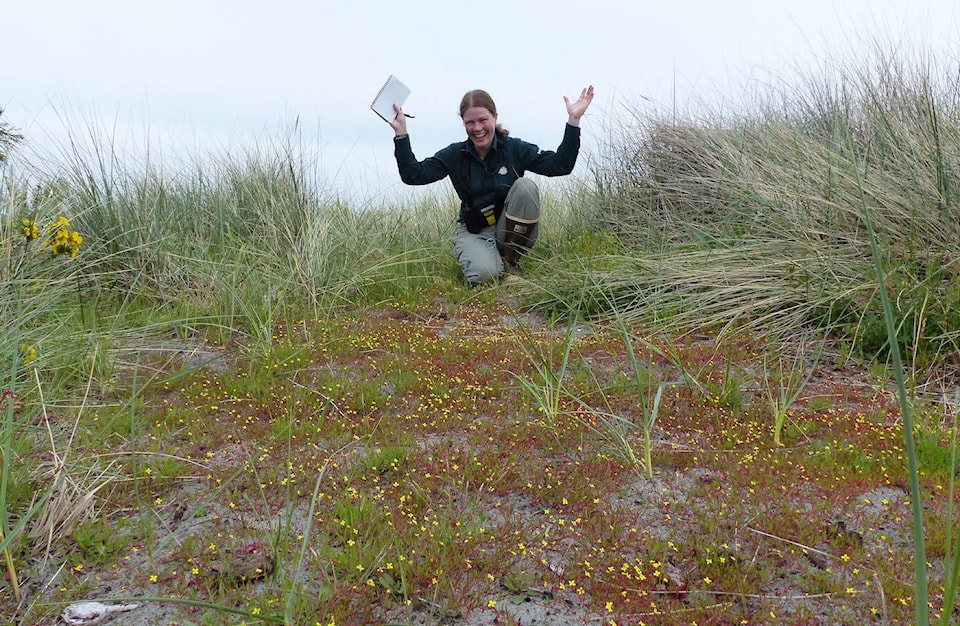Summertime on Sidney Spit can be wonderful for visitors, but it is also a crucial time for the coastal sand ecosystem there. Over the last two years, volunteers and Parks Canada staff have been removing invasive plants, and according to Pippi Lawn of Gulf Islands National Park Reserve (GINPR), the project has been quite the success.
One plant in particular, the contorted-pod evening primrose, has increased by 950 per cent thanks to their efforts. The new meadow is bursting with 30,000 new plants.
“The response in such a short amount of time is beyond our wildest expectations,” said Lawn.
A healthy sand ecosystem has patchy vegetation with open spaces and some degree of free-flowing sand. In the past, invasive species like scotch broom and European beach grass had covered the area and locked the sand in place, squeezing out the species-at-risk.
To propagate more of the contorted-pod evening primrose, staff collect a small amount of seed from the existing plants and give them to Fort Rodd Hill National Historic Site, which has a species-at-risk nursery. Staff take more seed from the nursery-grown plants and send it to Sidney Spit, where it is sown on a prepared habitat that is cleared of invasive species. That way, the new plants have the same genetics.
The plants don’t need water, just time, and the occasional weed pull to ensure the prepared habitat stays clear of invasives.
“It used to be a forest of scotch broom out there, and now it’s all gone,” said Lawn.
European Beach Grass is more tricky, said Lawn, with underground rhizomes where roots and plants can sprout from. They require repeated digging and prying to remove, and Lawn is thankful to the volunteers who come out to help despite the sometimes wet weather.
The work is typically done over the winter months by staff and volunteers, because during the summer, the area is most fragile. The common nighthawk (which despite its name is a threatened species on the federal Species At Risk Act) lays its eggs directly on the sand, and those could be trampled.
During peak volunteer peak season, fall and spring, they have three events a week, often on weekends. There are 298 volunteers on the site, and over 1,800 volunteer hours have been logged over a year and a half.
“It’s a really beautiful place to work because it’s out on the sand spit,” said Lawn. “It’s positive work where you’re having tangible positive effects on the species at risk.”
Lawn said people are welcome to visit Sidney Spit and walk along the beach. The vegetated area higher up on the beach is closed off because it’s most sensitive (there is new signage and fencing around that area). Dog owners are also asked to keep their pets on a leash so they do not disrupt the nesting birds.
“As long as people stay out of the closed areas, that will really help these species.”
Lawn said parks and park reserves are places where these rare species can live, and that biological diversity makes ecosystems resilient against change.
“These particular species are characteristic to the ecosystem, and if we lose that, we lose something that’s very special to Canadians…It’s important we do what we can so they can still have a home where they can thrive.”
Prospective volunteers can email gulf.islands@pc.gc.ca for information.
reporter@peninsulanewsreview.com
